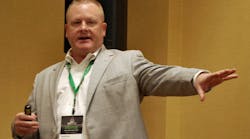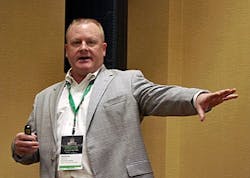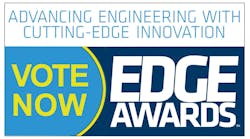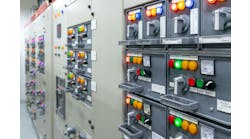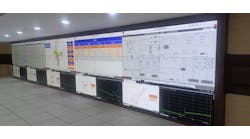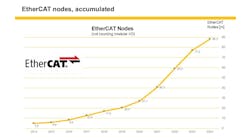“First, let me say, these are their numbers, not ours. CapEx was reduced 15%, mainly by reducing electrical infrastructure—relays, wiring, cabinets—which also lowered labor costs to install that equipment.” Schneider Electric’s Matthew Railean discussed client savings realized through integrated automation and electrical systems.
It was time to test the concept of integrated power and automation. “The project is a major grass-roots facility on the Gulf Coast,” said Matthew Railean, major accounts director, Schneider Electric. The company worked closely with the capital project team with the goal of reducing capital expenditure (CapEx), optimizing the project schedule and documenting best practices for future projects. “Every step of the way, the integrated power and automation approach was compared to conventional separate systems,” Railean said.
Railean spoke at Schneider Electric Innovation Days, this week in Austin, Texas.
On the automation side, the scope included DCS, SIS, turbomachinery control (TMC), remote instrument enclosure (RIE) and electrical equipment design, implementation, commissioning and startup. The electrical scope included low- and medium-voltage switchgear, motor control centers (MCC), transformers, relays, drives, uninterruptible power supply (UPS) and eHouse electrical control center design, implementation, commissioning and startup.
Two become one
The vision was for combined electrical and automation project design and execution. “The challenge was to create a close relation between these historically siloed functions, both in the capital project team and at the site,” Railean said.
“The pre-engineering process included a lot of cycles of bids and rebids, and a lot of time on our part to get the scope and all the numbers right,” Railean said. “The design called for a mix of Schneider Electric and other equipment. We offered Schneider Electric equipment where we saw a technical or commercial advantage and sometimes they agreed, but sometimes they wanted other equipment for their own reasons.”
As they refined the integrated solution, “Every change affected both automation and electrical, and HVAC, building size, etc. required rework,” Railean said. “We also optimized the eHouse design—size and space—to keep costs down.”
Offsite testing was performed by Schneider Electric and system integrator Fibrebond, and included the eHouse electrical infrastructure and RIE process automation infrastructure, which has an advanced motor management system with fiber connecting the eHouse and RIE. Quality control and testing were done at Schneider Electric, and the factory acceptance test (FAT) was performed at Fibrebond.
Onsite activities include installing the RIE and eHouse, an integrated FAT, commissioning and startup. The design included Asset Advisor, which identified issues to avoid startup delays. “Waiting until we were onsite to do the integrated FAT removed the cost of assembly and disassembly,” Railean said. “The project is in the middle of that FAT stage now.”
Integration brings business value
“First, let me say, these are their numbers, not ours,” Railean said. “CapEx for the project’s control and power systems was reduced 15%, mainly by reducing electrical infrastructure—relays, wiring, cabinets—which also lowered labor costs to install that equipment.” Other labor cost reductions included 10% fewer man-hours due to preconfigured electrical monitoring and control, and a 40% lower labor rate for shop vs. field time.
“The smaller eHouse footprint only reduced its cost 4-5%, not a major driver here, but it could be much more important, for example, on an offshore rig,” Railean said.
The project schedule was shortened in engineering, with faster startup and commissioning. Faster engineering design up front allowed the client to pour foundations before the end of the year, which was important to them to distribute costs between years. “In this case, the schedule was not really under the gun, but it helped when they wanted to spend some money this year instead of next,” Railean said.
“The single-point responsibility avoided finger-pointing—one project manager, faster issue resolution and simplified contract management,” such as one purchase order instead of more, Railean said.
“Post-project results are projected, they’re not reality yet,” Railean added. But, the integrated power and automation concept could improve operational expenses (OpEx) and streamline operations with one HMI and alarming system. Improved collaboration between operations and electrical teams should lead to faster problem resolution and issue avoidance. That should bring lower maintenance costs, improved throughput, improved uptime, and lower training costs, Railean said.
“We’ll continue to work with the client to make this a best practice,” Railean added, “and hope to have them presenting here next year.”
